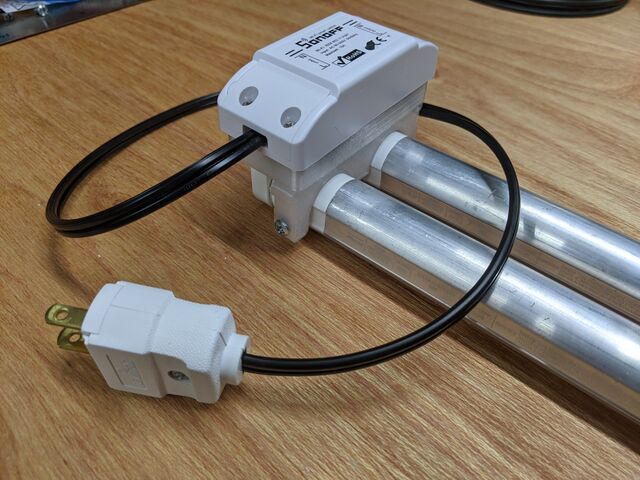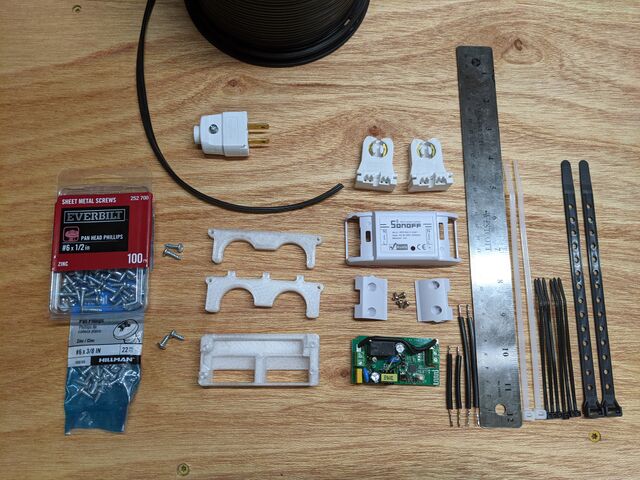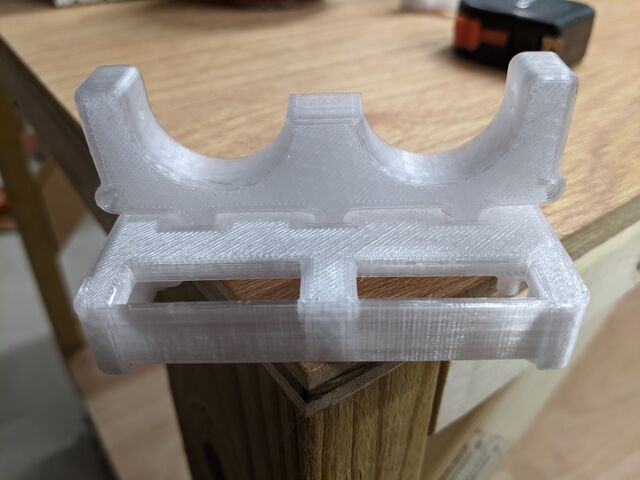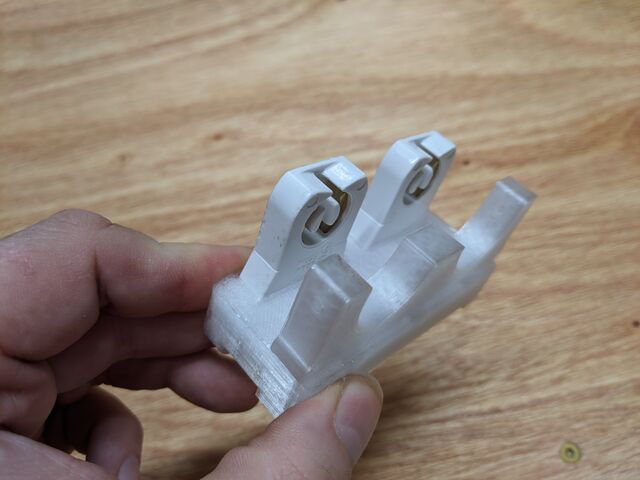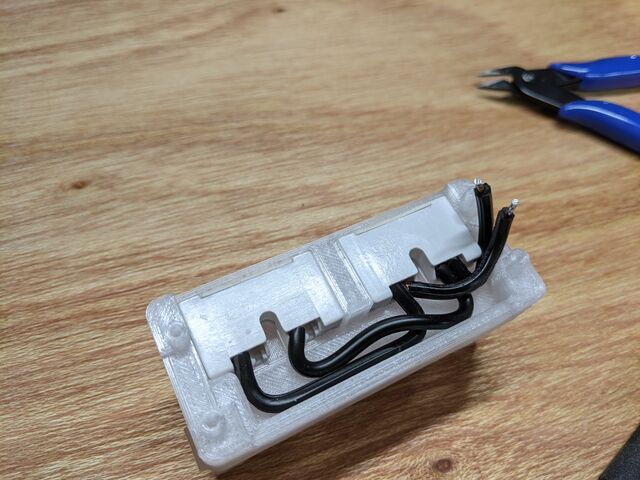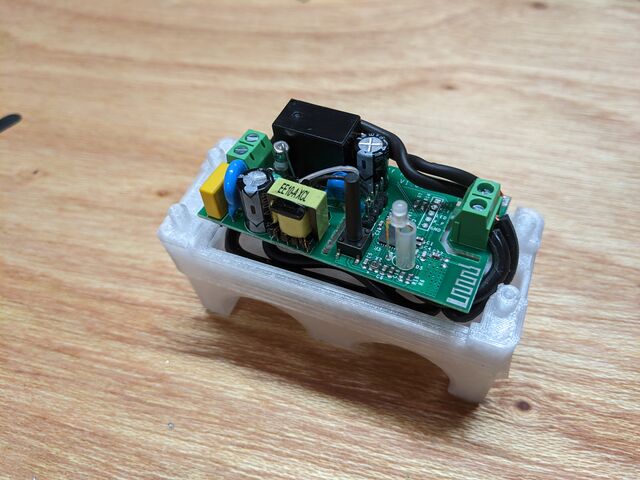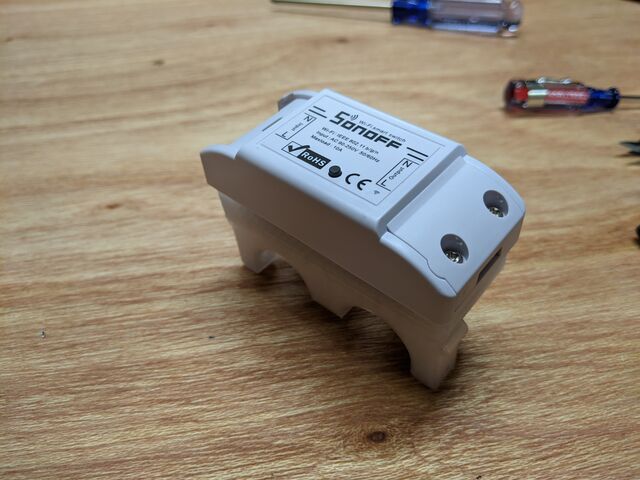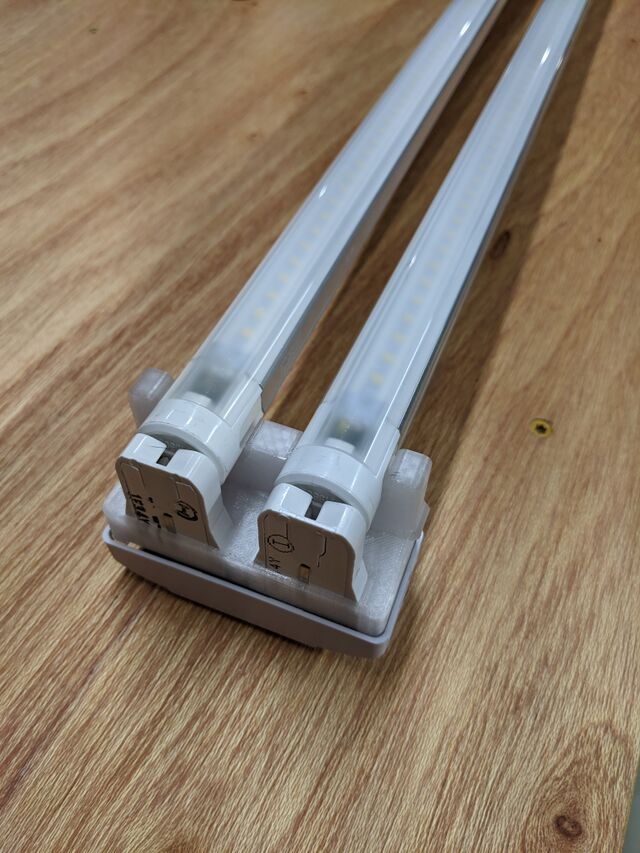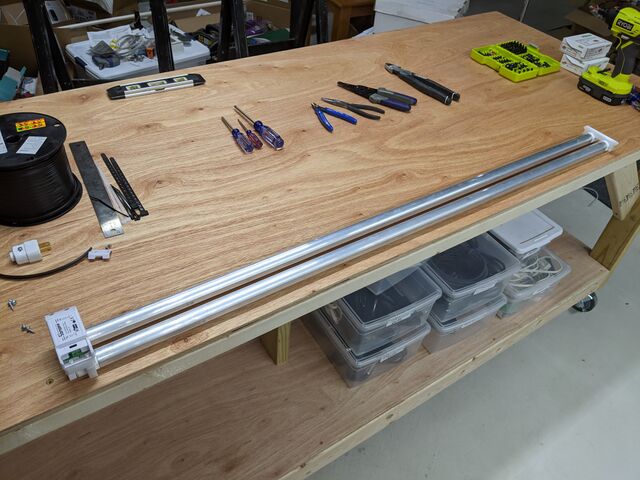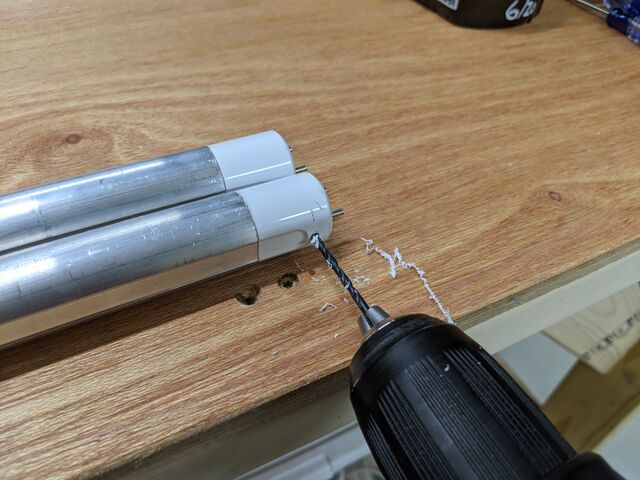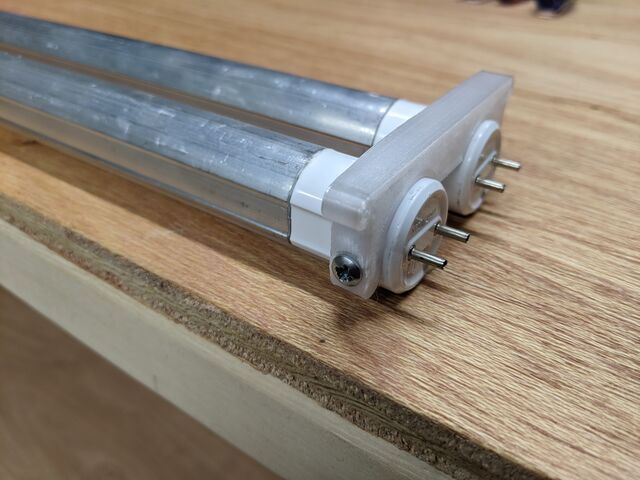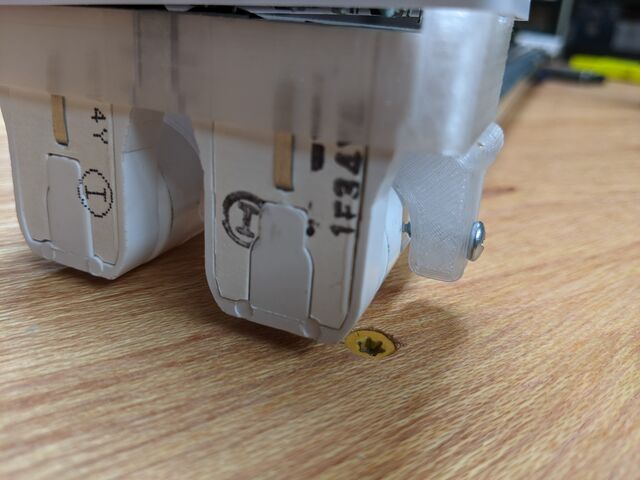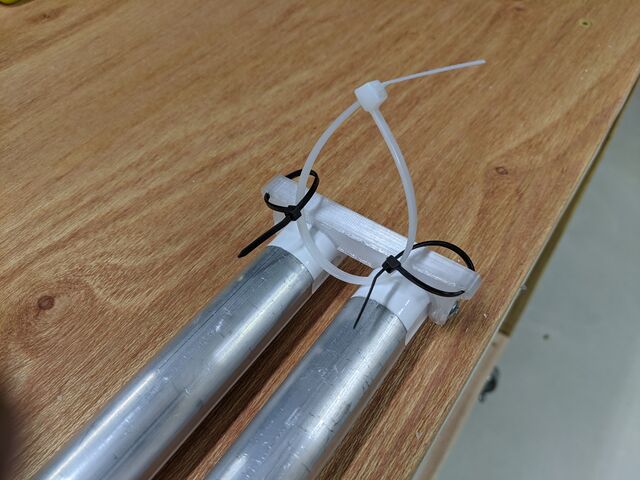User:Mkfink/LED tube fixture
DIY 3D Printed Wi-Fi LED Tube Fixture - Mkfink
Contents
Intro
So a while back i3 received a donation of a bajillion T8 LED bulbs, far more than we could reasonably (or unreasonably!) use in the building. We retrofit every remaining fluorescent fixture in the building to take the LED tubes, and that barely made a dent in the 2+ pallets. In the recent months spent in my house, I've found that I would really like to imrpove my previously neglected home workshop space, which was especially wanting for more lighting than a few A19 bulbs. Of course I don't have any T8 fixtures, and a new one is like $20, only to have to tear it apart to retrofit for LEDs. That's silly for basically a piece of sheet metal and a cord. Plus, these bulbs are already aluminum tubes with LED strips glued to them, they don't need a rigid fixture like glass tubes. And they have built in 120VAC to 24DC supplies, so you just apply mains to the pins on one end and receive light. So, I set out for something very minimal and easily reproduced. Not quite so minimal as soldering some wires to the end of the bulb and zip-tying it to the ceiling (that was a totally working prototype, but maybe aim for something that won't give inspectors nightmares...). And lets make it Wi-Fi controlled with a Sonoff Basic because why not IoT all the things. So this is what I ended up with, for about $10 including the Sonoff.
Since originally posting this, I've updated the Thingiverse page with a 4 bulb version of the fixture as well. Construction is pretty much the same, but I replaced the press fit between spacer and case with screws.
Building It
BOM
- 5 ft lamp cord - $1
- Plug - $2
- 4x #6 x 1/2" pan head sheet metal screw (not self-drilling) - $0.17
- 2x #6 x 3/8" pan head sheet metal screw (not self-drilling) - $0.10 (Revision 2 only)
- 3d printed parts - 2 bulb spacers and case (50g PETG) - $1.05
- 2x non-shunted LED bulb socket (donated with bulbs, otherwise $1-$2) Probably Leviton 13351
- 2x t8 LED tube (donated)
- Zip ties/string/chain to hang with $?
- Sonoff basic $5-$6 (I suggest running Tasmota firmware on it.)
For the 4 bulb version, add 4x #6 x 3/8" pan head metal screws to attach the spacer to the case. And of course two more bulbs and sockets.
Steps
1. Print out the parts: File:T8 fixture.zip
2. Connect the case with the one of the bulb spacers. It's a tight press fit, so I use a rubber mallet. Set the parts on the corner of a table, so that the raised screw holes aren't sitting on the surface. If you hit it with a mallet sitting on the screw holes, you'll just crush them. With revision 2, screw the parts together with two #6 x 3/8" pan head metal screws.
3. Insert the bulb sockets into the fixture.
4. Insert a pair of wires between the left and right sockets. For this, I used split lamp cord, 80-90mm long, with both ends stripped to 10mm and tinned. Insert another pair of wires in the right socket angled to the right side and up in the notch in the case. I used 50-60mm sections of wire here, stripped to 10mm on the socket end and 5mm on the other end and tinned.
5. Connect the wires to the **output** end of the Sonoff Basic.
6. Put the top of the Sonoff Basic case on and screw down the cover on the output side.
7. Get your LED bulbs and make sure to orient them with the AC power end by the sockets.
8. Insert the bulbs into the socket, making sure they don't slide out.
9. Put the other bulb spacer on the far end of the LED tubes. Clamping it down can be helpful.
10. Drill 3/32" holes in the plastic cap on the end of the bulb lined up with the holes in the far bulb spacer. **ONLY** do this on the **unpowered** end of the tubes.
11. Drive two of the #6 x 1/2" screws through the far spacer, into the hole you drilled into the bulbs.
12. Drive the other two #6 x 1/2" screws through the holes in the spacer near the sockets, so that they dig into the plastic and pin the bulbs in place. The screws should **NOT** puncture the bulb here, as there is live mains on the other side of the plastic.
13. Attach a cord and plug to the input end of the Sonoff Basic and install the cover piece there. I used lamp cord and a DIY plug here, you can also use any cut up power cord with plug.
14. Test your new fixture to make sure everything works. 15. Hang it. I used zip-ties through the holes in the upper corners of the bulb spacers. String or chain should also work.
Other thoughts
- You assume all risks in using this design. Neither I nor i3Detroit are responsible for any harm or damage resulting from its use.
- Everything here is shared under a [Creative Commons Attribution-ShareAlike license](https://creativecommons.org/licenses/by-sa/4.0/).
- Use only non-shunted sockets. That is, the two contacts in the same socket are live and neutral. Normal fluorescent tubes use shunted sockets. The ones used here are manufactured by Leviton. There doesn't seem to be an exact standard size for this component, and if you actually want to make this with sockets with different dimensions that don't fit, let me know and I'd love to help.
- The sockets are a little picky about what wire fits well. I used 18/2 stranded lamp cord moderately tinned. Not enough solder and the wires just fall out, too much and they're really hard to insert.
- Again, don't drill any holes in the live end of the LED tubes!
- I also included a plain cap for the fixture which you can use instead of the Sonoff Basic to make a 'dumb' fixture. You'll probably want to add some kind of strain relief for the cord in this case, like a stick on zip-tie mount.
